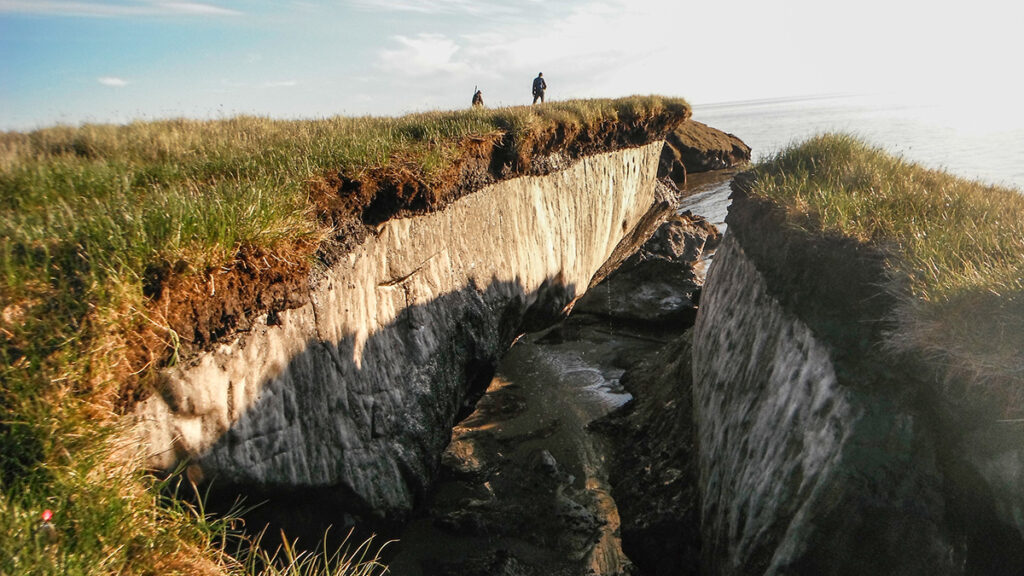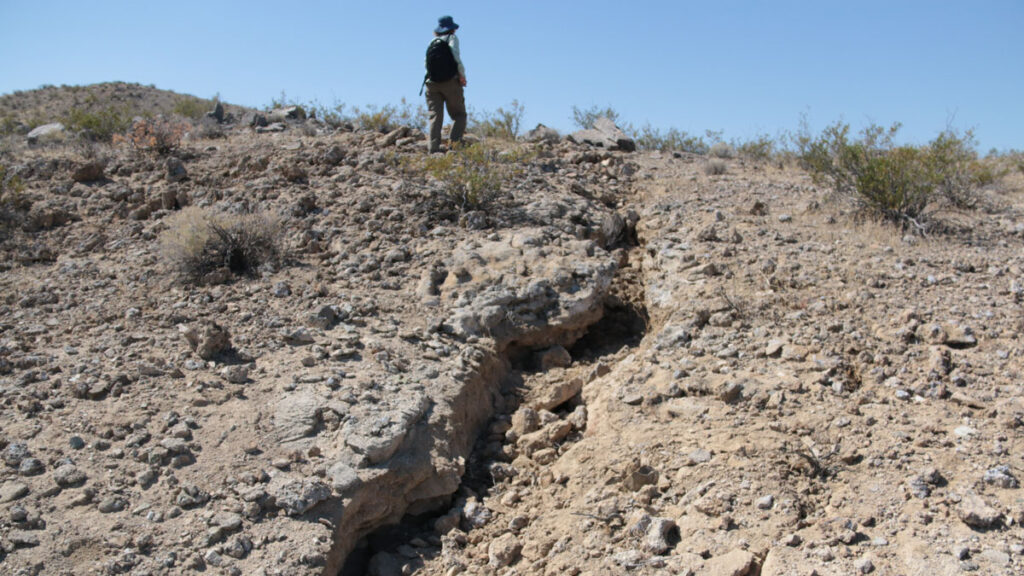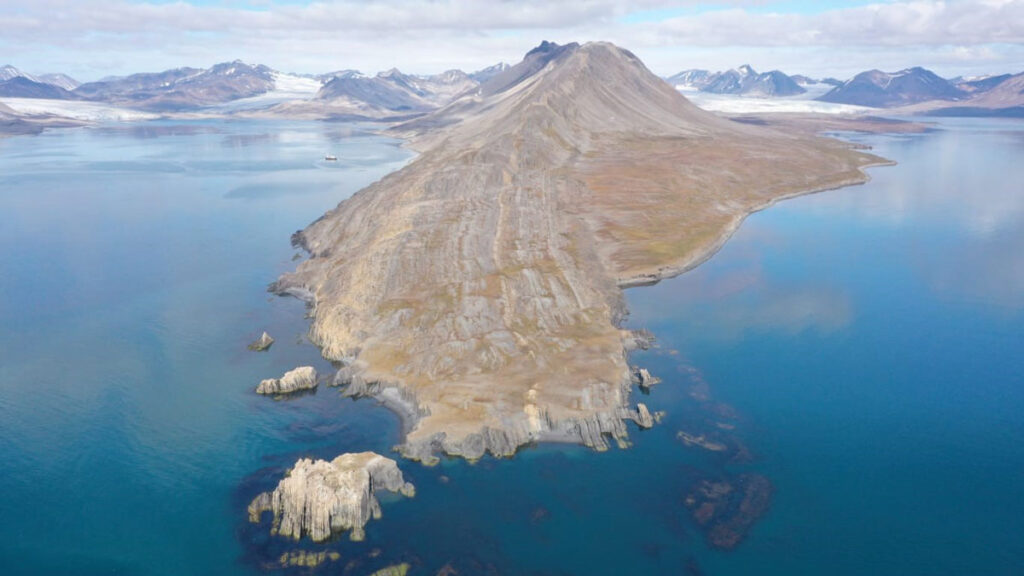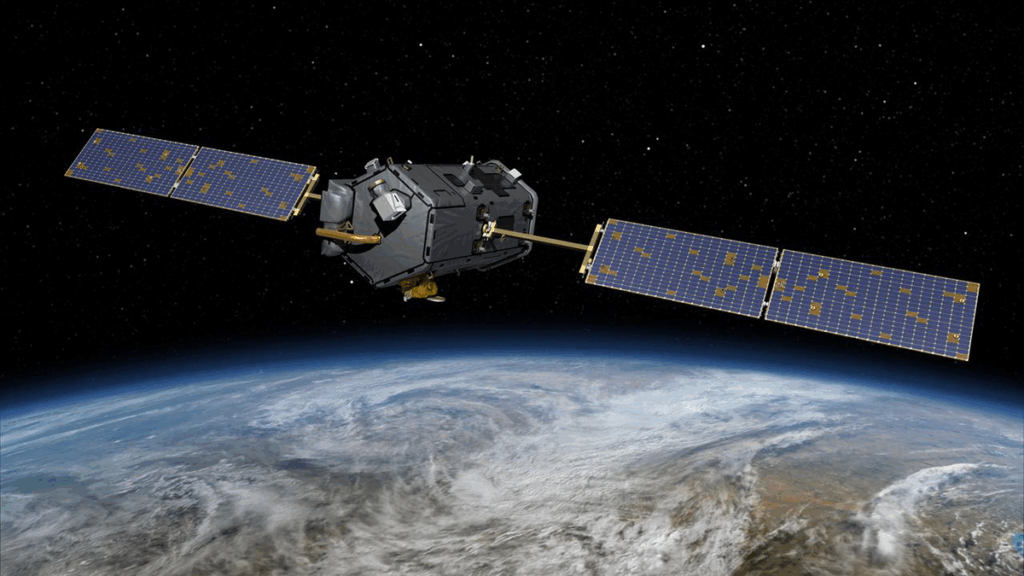American Geophysical Union
Eos is a source for news and perspectives about Earth and space science, including coverage of new research, analyses of science policy, and scientist-authored descriptions of their ongoing research and commentary on issues affecting the science community.
Lab Setup Mimics Arctic Erosion
14 November 2025 @ 2:26 pm
 The new methodology gave researchers valuable insights into why Arctic shorelines are crumbling.
The new methodology gave researchers valuable insights into why Arctic shorelines are crumbling.Garment Factories Are Heating Up. Here’s How Workers Can Stay Cool
14 November 2025 @ 2:26 pm
 The solutions are simple, but economic barriers remain high.
The solutions are simple, but economic barriers remain high.The Ridgecrest Earthquake Left Enduring Damage in Earth’s Deep Crust
14 November 2025 @ 2:24 pm
 The shallow crust has recovered since California’s 2019 quake, but damage persists at depths greater than 10 kilometers.
The shallow crust has recovered since California’s 2019 quake, but damage persists at depths greater than 10 kilometers.The 11 November 2025 landslide at Hongqi Bridge in China
14 November 2025 @ 8:27 am
 A large landslide has destroyed a 662 m long highway viaduct in China. Over the last two days there has been considerable media coverage of a large, highly destructive rockslide that occurred at Hongqi Bridge in Sichuan Province, China. There is a very interesting set of images of the bridge during construction on the Highest […]
A large landslide has destroyed a 662 m long highway viaduct in China. Over the last two days there has been considerable media coverage of a large, highly destructive rockslide that occurred at Hongqi Bridge in Sichuan Province, China. There is a very interesting set of images of the bridge during construction on the Highest […]How Algae Helped Some Life Outlast Extinction
13 November 2025 @ 1:40 pm
 Cooler waters near Norway’s north provided a refuge for phytoplankton during the Great Dying, a new study suggests.
Cooler waters near Norway’s north provided a refuge for phytoplankton during the Great Dying, a new study suggests.Where Science Connects Us
13 November 2025 @ 8:10 am
 Eos joins AGU25 in the Crescent City to navigate the endless waypoints offered by Earth and space sciences.
Eos joins AGU25 in the Crescent City to navigate the endless waypoints offered by Earth and space sciences.Announcing New AGU Journal Editors-in-Chief Starting in 2026
12 November 2025 @ 4:51 pm
 AGU is excited to welcome new Editors-in-Chief for five of our journals in 2026.
AGU is excited to welcome new Editors-in-Chief for five of our journals in 2026.Taking Carbon Science Out of Orbit
12 November 2025 @ 1:59 pm
 NASA's Orbiting Carbon Observatory-2 satellite reveals an impressively dynamic picture of the Earth's carbon cycle, yet it may be prematurely decommissioned and destroyed due to budget cuts.
NASA's Orbiting Carbon Observatory-2 satellite reveals an impressively dynamic picture of the Earth's carbon cycle, yet it may be prematurely decommissioned and destroyed due to budget cuts.When Cascadia Gives Way, the San Andreas Sometimes Follows
12 November 2025 @ 1:56 pm
 Roughly half of the earthquakes that occurred along the southern Cascadia subduction zone over the past 3,000 years were temporally associated with earthquakes along the northern San Andreas fault.
Roughly half of the earthquakes that occurred along the southern Cascadia subduction zone over the past 3,000 years were temporally associated with earthquakes along the northern San Andreas fault.Speedy Flyby Adds New Organics to Enceladus’s “Primordial Soup”
12 November 2025 @ 1:54 pm
 A new analysis of old Cassini data has also verified past detections of complex organics in Saturn’s E ring, strengthening the chemical ties between the ring and its progenitor.
A new analysis of old Cassini data has also verified past detections of complex organics in Saturn’s E ring, strengthening the chemical ties between the ring and its progenitor. Robust increase in observed heat storage by the global subsurface, Cuesta-Valero et al., Science Advances
Changes in heat storage within the different components of the climate system alter physical and biogeochemical phenomena relevant for human societies and ecosystems. Among such processes, permafrost thawing, soil carbon storage, and surface energy exchanges depend on the persistent heat gain by the continental subsurface. Nevertheless, there are not enough data to estimate ground heat storage at the global scale after the year 2000. We solve this problem by expanding the database of geothermal data with remote sensing observations
Robust increase in observed heat storage by the global subsurface, Cuesta-Valero et al., Science Advances
Changes in heat storage within the different components of the climate system alter physical and biogeochemical phenomena relevant for human societies and ecosystems. Among such processes, permafrost thawing, soil carbon storage, and surface energy exchanges depend on the persistent heat gain by the continental subsurface. Nevertheless, there are not enough data to estimate ground heat storage at the global scale after the year 2000. We solve this problem by expanding the database of geothermal data with remote sensing observations  The planet continues to warm due to human activity; bouts of cold weather don’t change this.
Satellites around the world measure temperatures at different places throughout the year. These are averaged to calculate annual global temperatures.
The past ten years (2015-2024) have been
The planet continues to warm due to human activity; bouts of cold weather don’t change this.
Satellites around the world measure temperatures at different places throughout the year. These are averaged to calculate annual global temperatures.
The past ten years (2015-2024) have been Visible satellite image (with lightning) of Hurricane Melissa at 4:55 p.m. EDT Sunday, Oct. 26, when it was a Category 4 storm with 145 mph (230 km/h) winds. (Image credit: NOAA/CIRA)
Human-caused climate change increased Hurricane Melissa’s wind speeds by 7% (11 mph, or 18 km/h), leading to a 12% increase in its damages, found
Visible satellite image (with lightning) of Hurricane Melissa at 4:55 p.m. EDT Sunday, Oct. 26, when it was a Category 4 storm with 145 mph (230 km/h) winds. (Image credit: NOAA/CIRA)
Human-caused climate change increased Hurricane Melissa’s wind speeds by 7% (11 mph, or 18 km/h), leading to a 12% increase in its damages, found